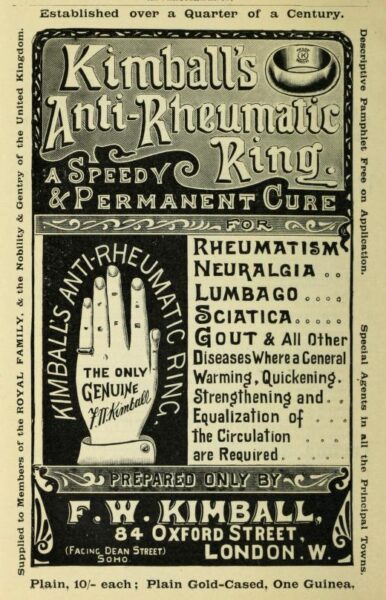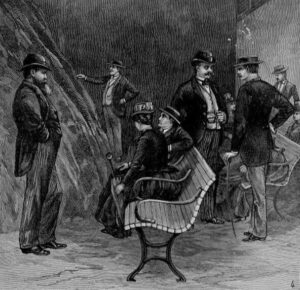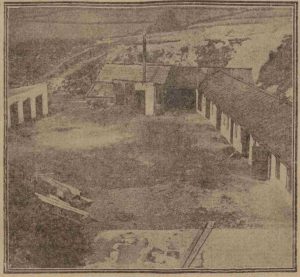Source: The Graphic, Sat 25 October 1884
The format of this one makes it a bit tricky to type out, but if you click on the advert, you should then be able to zoom in and read it. The Ammoniaphone was an instrument designed to help singers and public speakers improve the quality of their voice. It also claimed to cure consumption and other lung problems.
It consisted of a slender metal tube 25 inches in length, with decorated handles and a push-button valve on each end. As well as the picture below left, you can see a photo courtesy of the Science Museum, here. The instructions for use were as follows:
Unscrew the centre cap or nozzle two turns. Take hold of the Ammoniaphone, press the end valves, bend forward, place the lips tightly over the centre cap, and inhale very slowly but deeply.

Within the tube was a wick-like material soaked with hydrogen peroxide, ammonia and peppermint oil. The ingredients don’t sound very appealing, but the inventor, Dr R. Carter Moffat, described the vapour much more romantically as ‘Italianised Air.’
Italy was a destination for consumptives seeking a warm climate, but not only that – it also produced excellent tenors. While visiting the country, Carter Moffat (who was an eminent Scottish chemist, certainly no amateur enthusiast) had analysed the air and found the presence of free ammonia and peroxide of hydrogen – a combination he believed was unique to Italy and therefore likely to be responsible for the inhabitants’ operatic ability.
Shortly after its introduction, the rights to the Ammoniaphone were bought for £2000 in shares by the Medical Battery Company, run by Cornelius Bennett Harness. Dr Carter Moffat stayed closely involved, giving promotional lectures about his invention. The product was well-received by the press.
Not everyone, however, was convinced. In the Ladies’ Column of the Bristol Mercury (written ‘by one of themselves’), the correspondent described a musical evening where the Ammoniaphone was the object of much interest:
Several guests present took long whiffs from the ammoniaphone, but I discovered no obvious change in their tone or compass of voice. I suppose the experiment has to be frequently tried to produce any effect. I remarked that if the inhalation of free ammonia and peroxide of hydrogen is so good for the voice, it seemed scarcely necessary to enclose these ingredients in an expensive flute-like case to test their powers, and the fact of doing so and calling the vapour they give off “artificial Italian air” savours to me of quackery.
The manufacturers would have agreed that results only came from regular use. The instruction manual advised taking two inhalations a day and then doing vocal exercises – the voice would be ‘permanently improved in every way after one year’s use of the Ammoniaphone.’
The company’s promotional activities included commissioning an Ammoniaphone song – very apt, considering the target market. It told of the plight of a young man who wanted to propose to his sweetheart but lost his voice.
Ah! well for him and for the fair,
He’d heard that pure Italian air
Might be inhal’d, imparting tone,
Through Moffat’s famed “Ammoniaphone”
In the early 1890s a pocket version of the inhaler was introduced, but this was short-lived. The Medical Battery Company, whose main products were electro-magnetic belts, went bust in 1893 after getting into trouble with the courts for fraudulent claims. That, however, is a story for another post.




I think I’d rather just go to Italy for the winter!
Me too!